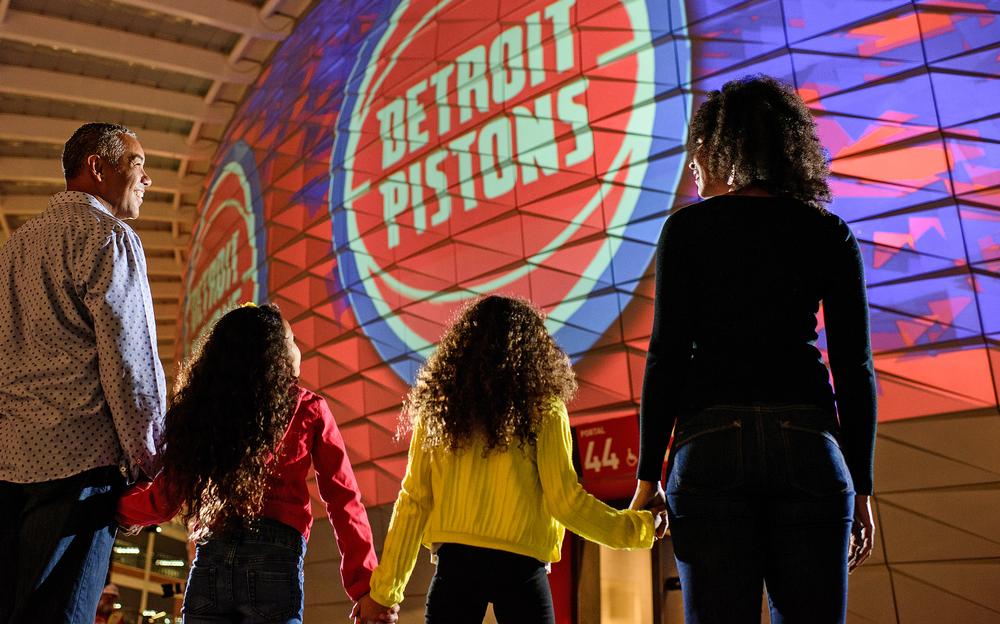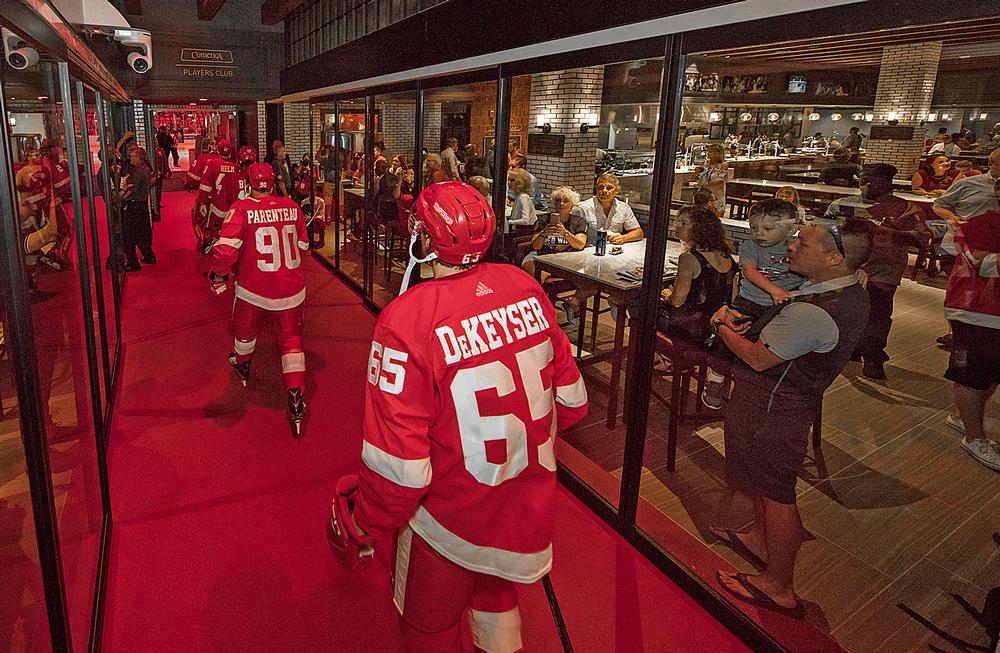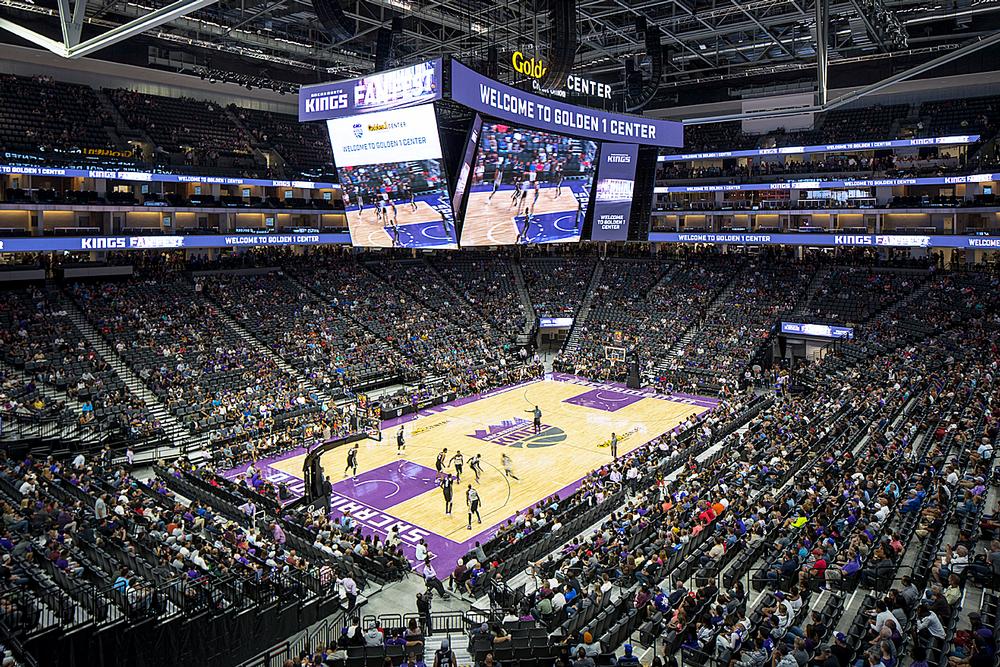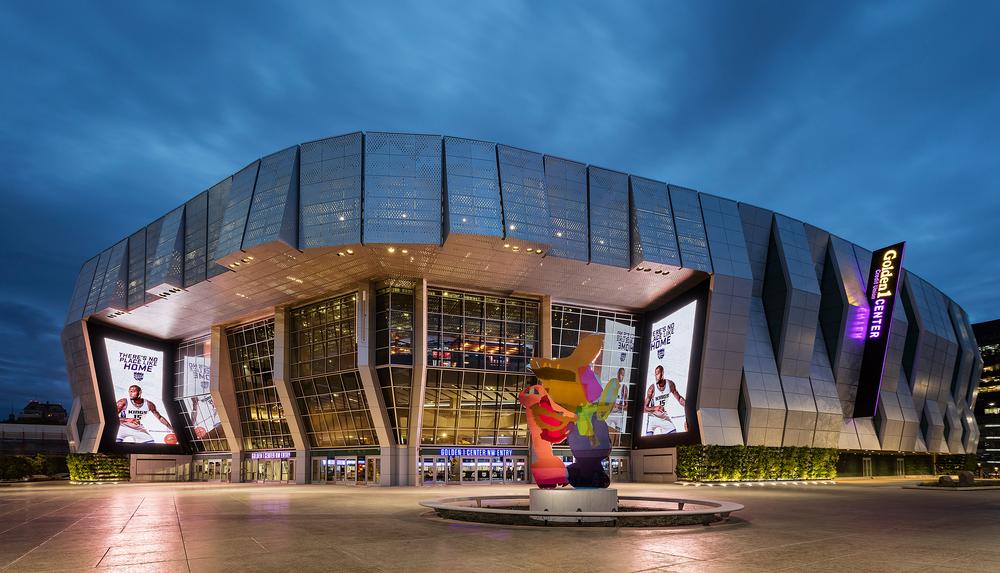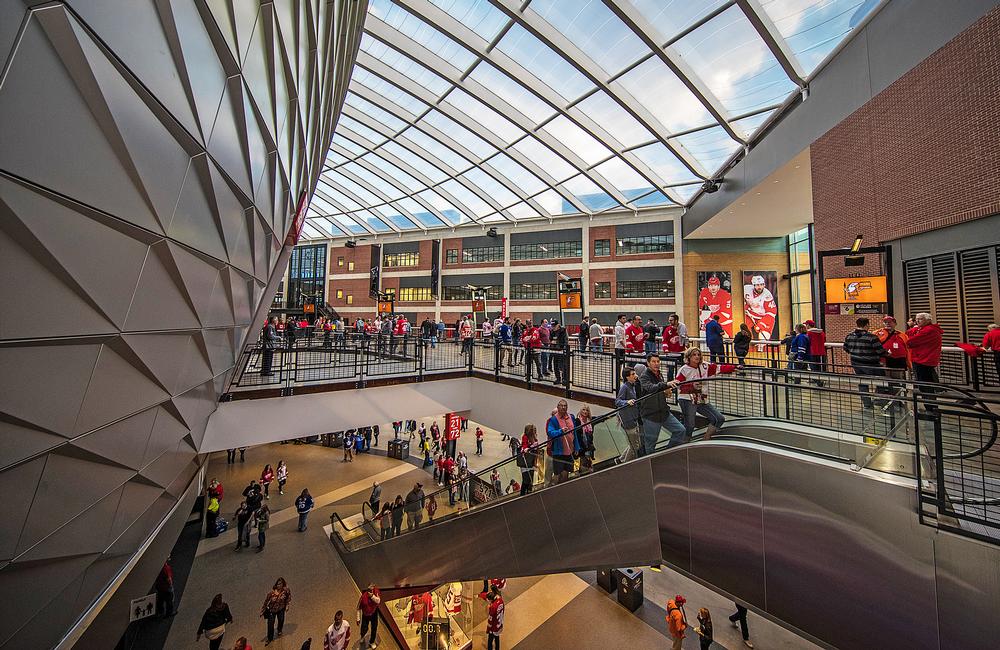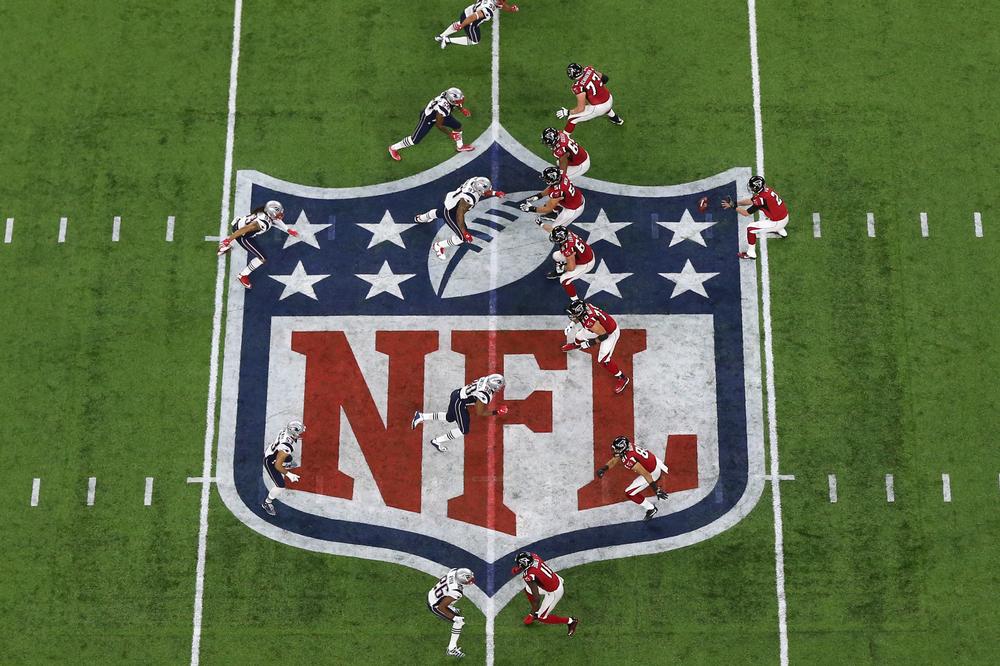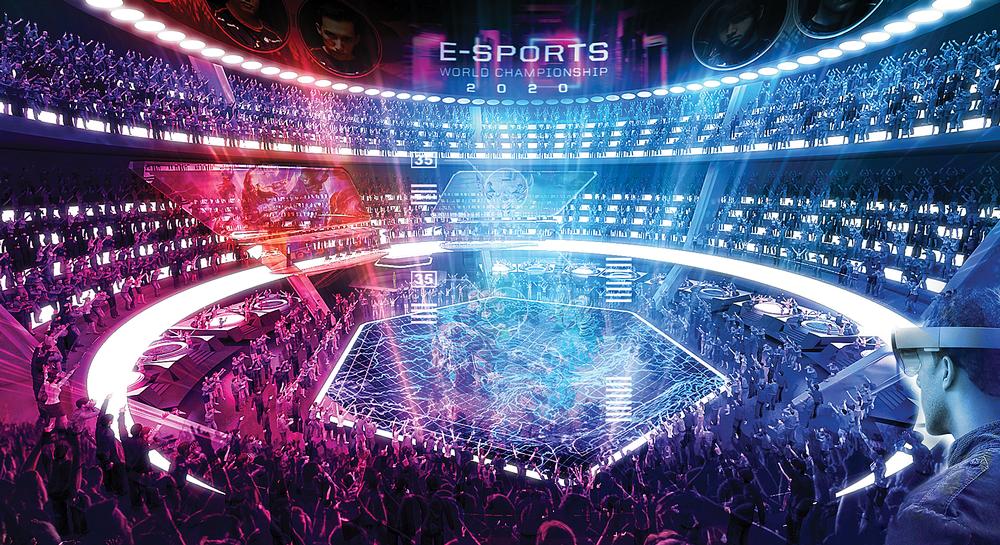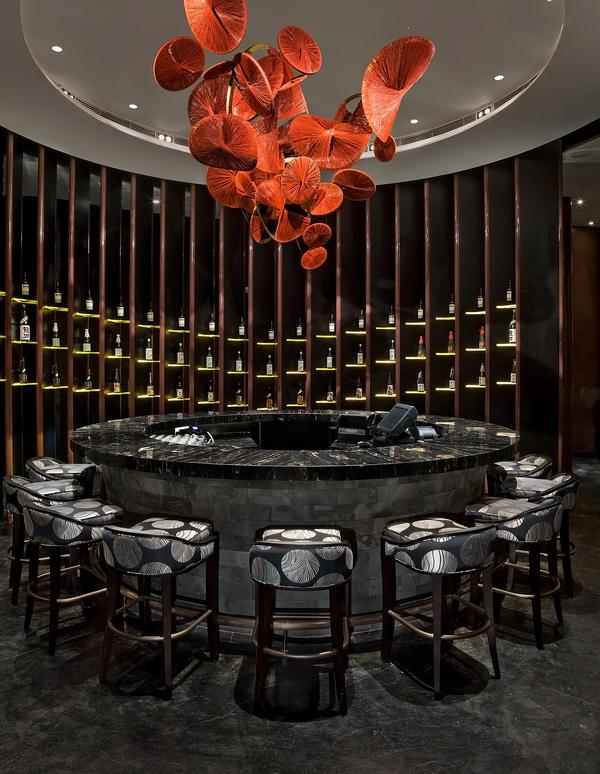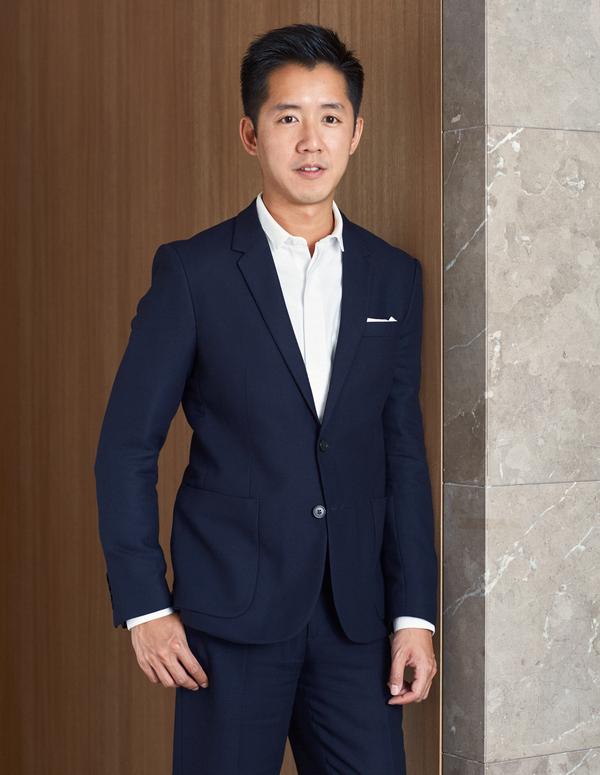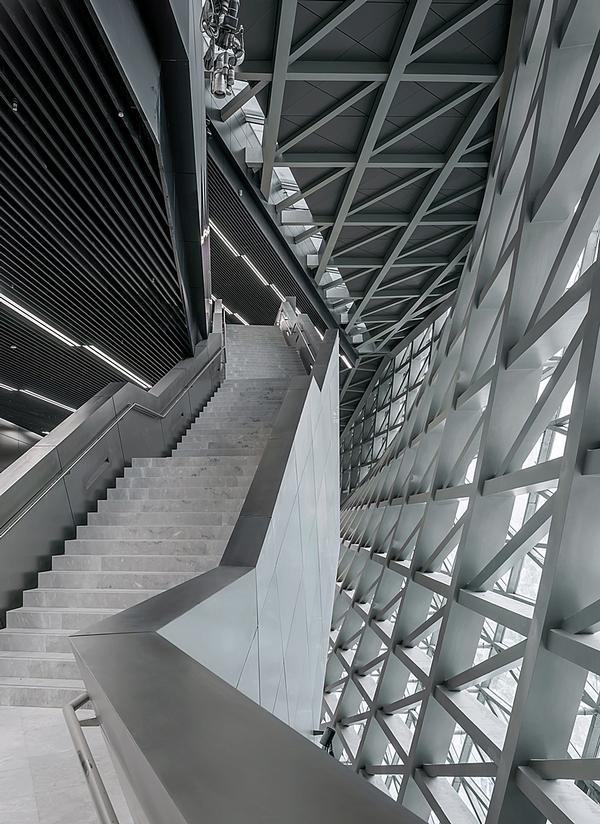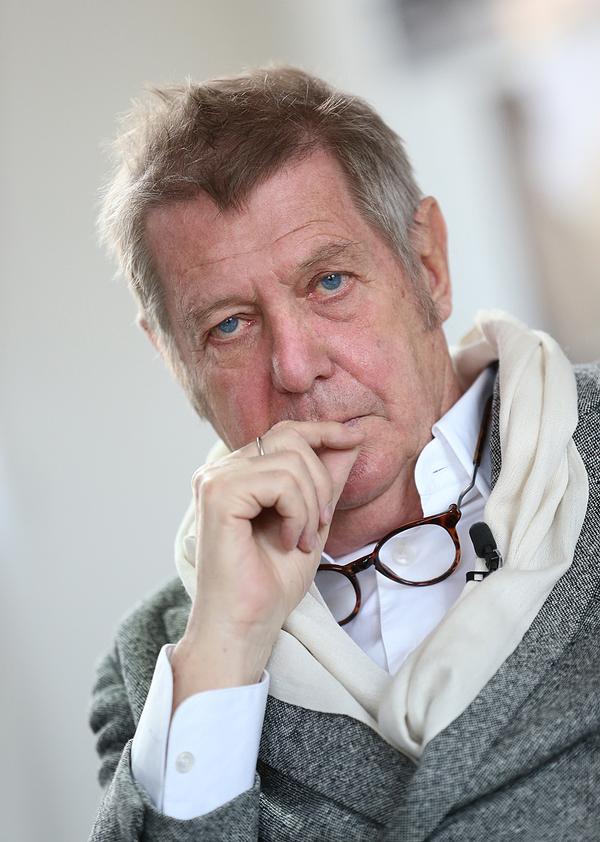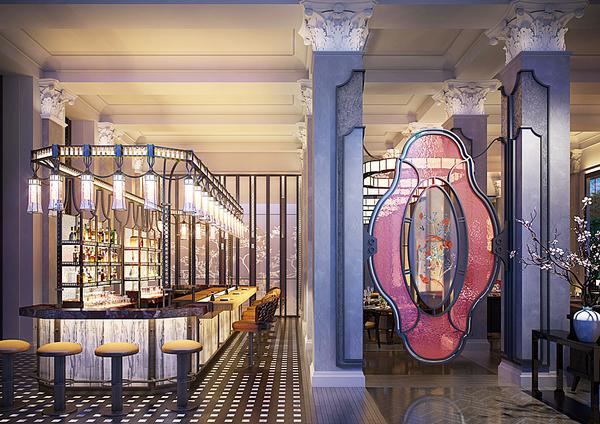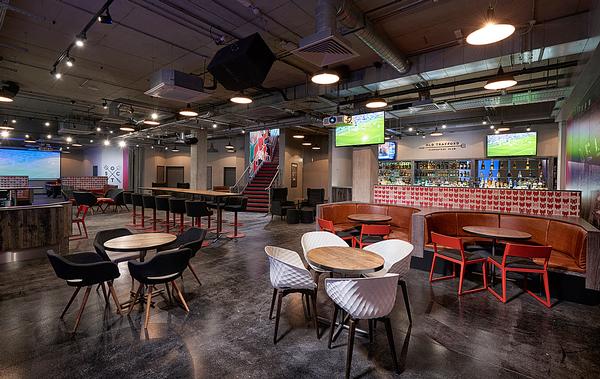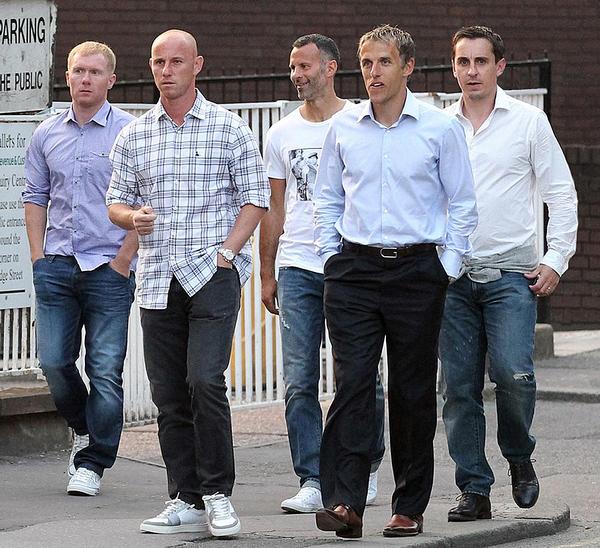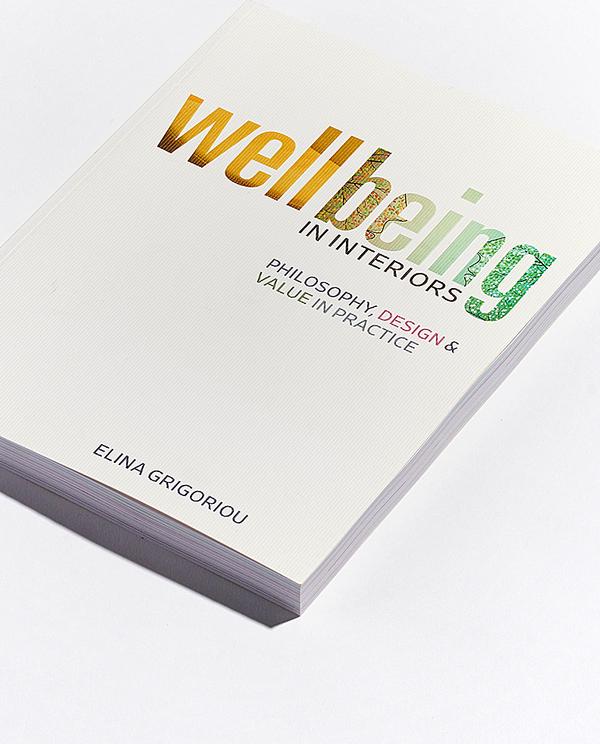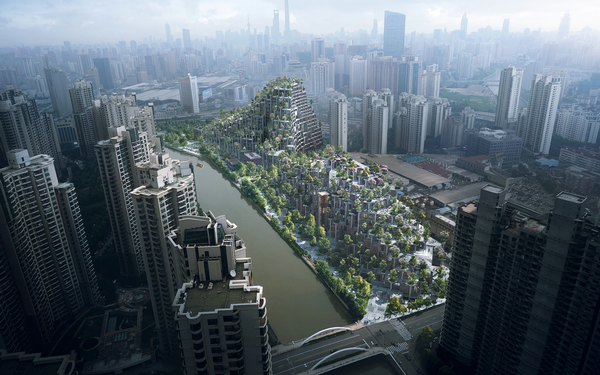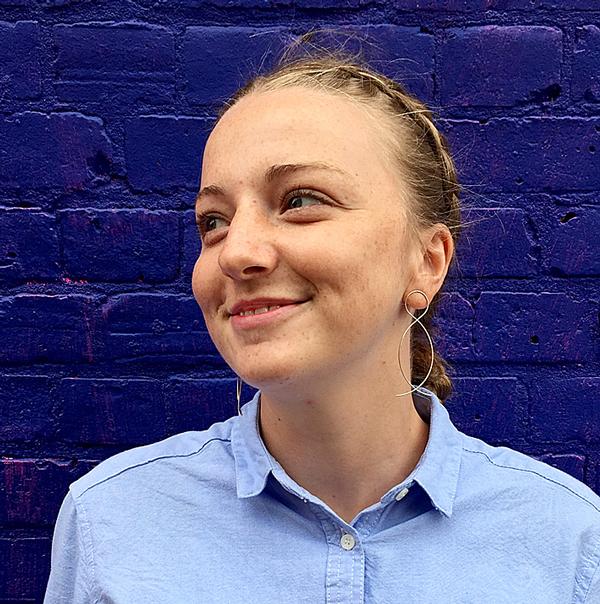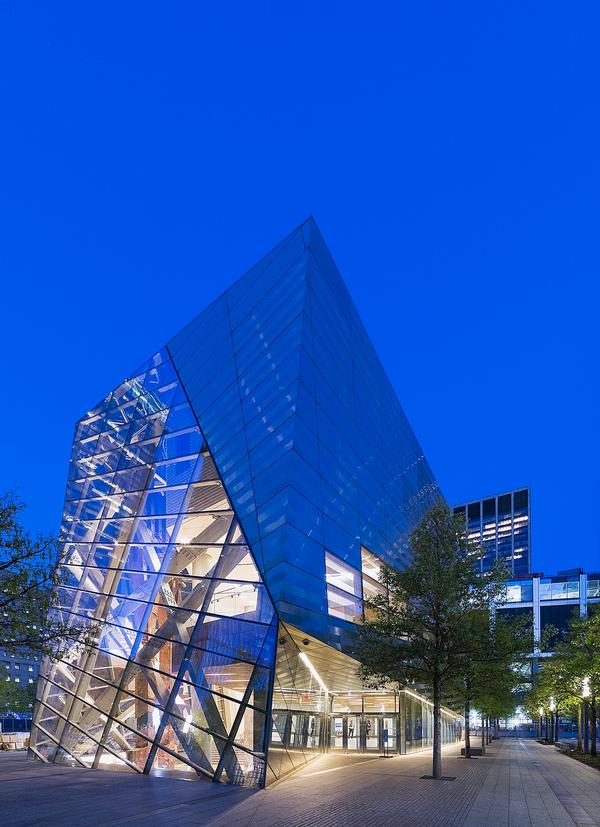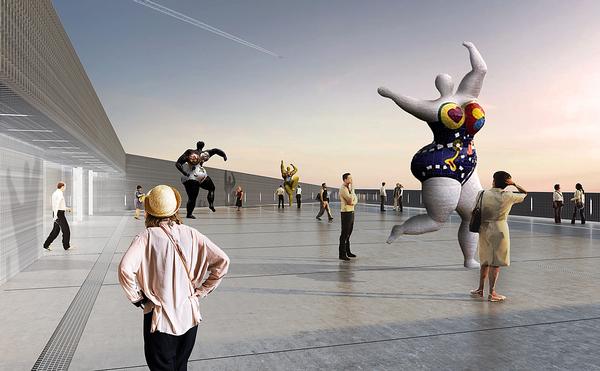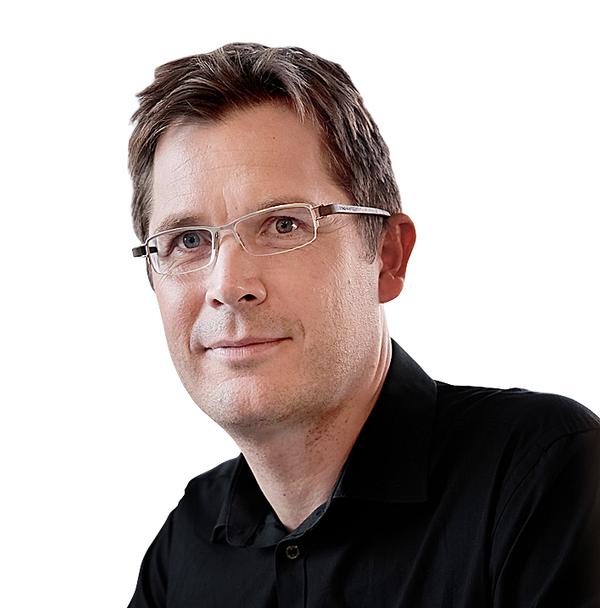Sports Venue Design
Creating audiences
How do venue designers and sports architects make sure they attract the widest possible demographic to their facilities? Tom Walker speaks to four designers for CLADbook
I think there’s been a huge move in the past 20 years to increase the quality of experience at sports venues,” says Chris Lee, the EMEA managing director at sports architects Populous. Lee says sports venue architecture is no longer merely creating a stage for people – sometimes from a narrow demographic – to come and watch sport.
“We’ve definitely moved on from the 80s and the 90s when much of live sport – and association football particularly – was very male-dominated,” Lee adds. “The whole stadium experience, from an audience point of view, was a rather niche one.
“Stadium design is no longer about cramming in as many young men as you can and selling them as much food and beer as possible. While the traditional fan culture is an important part of the experience – and we want to keep it – there are now many other considerations around facility design.”
Sports venues, especially those developed for professional sports and major events, are certainly evolving. In some cases, entire districts – offering retail, hospitality and entertainment – are being built around stadia and arenas as part of a trend to create mixed-use destinations where people will spend time before and after the events.
Encouraging longer dwell time means there’s a need to create new audiences for the facilities. Families, corporate visitors, even people who might be uninterested in sport but are up for experiencing a live event, are on the radar of those designing the sports buildings of tomorrow.
“The talks we’re now having with stadium owners are all about how to maintain an authentic fan experience while widening the demographics of the audience, Lee says. “How can we make venues more attractive to families, females and other groups who may not be seen as traditional sports fans?”
Diversified experiences
According to Ryan Gedney, vice president and senior project designer at HOK’s Sports + Recreation + Entertainment practice, the need to cater for new diverse audiences is changing the way venues are designed. “The live stadium experience is evolving and is no longer about sitting, shoulder to shoulder, for two hours.”
Gedney adds: “The desire for an entire new way of viewing sports yields a different kind of architecture. There’s a growing demand for people to be able to share an event with others, interact and converse with family, friends and fellow fans, while still being engaged with the game.”
David Manica, founder and president of sports specialist Manica Architecture, adds that an increasing number of facility owners are looking for architects to create leisure destinations rather than homes for sport.
“The stadium is much more than a building with a bunch of seats for the fans,” Manica says. “The mixed-use experience is becoming the core driver of the design and sport facilities are definitely being designed to evolve the spectator’s experience.”
Jon Niemuth, director of sports at AECOM, agrees and says that the new generation of stadia and arenas – with their diversified offers – has to now compete for visitors with other leisure options.
“The challenge we have is that people are faced with a lot of choices for their leisure time,” Niemuth says. “There’s such a diverse offer of sports and entertainment now that the competition for people’s time is fierce.
“As sports designers, we need to find ways to make people choose our venues from a myriad of other options, and that includes offering them choices they wouldn’t find elsewhere – that is where sport can help.”
California living
Niemuth picks out a recent AECOM project, the Golden 1 Center in Sacramento, California, as an example of a venue that looks to attract new audiences by providing a mix of sport and entertainment options.
The $507m arena, home to the Sacramento Kings NBA franchise, anchors the new Downtown Commons (or DoCo) district. DoCo is a large urban regeneration project which has added 14 hectares of real estate to the heart of Sacramento.
As well as the 17,600-capacity Golden 1 Center, the new district houses 6 hectares of restaurants, bars and retail; a 250-room Kimpton hotel; 45 residential units and around 23,000sqm of office space.
“Golden 1 Center is not merely an arena, it’s a district that happens to have an arena within it,” Niemuth says, and adds that the project – and its mix of services – takes inspiration from the old continent.
“The design of Golden 1 and its surroundings has been influenced by classical European town planning,” he says. “Traditionally, you’d have a church at the centre of the community, surrounded by a town square which acts as an activator.
“What we did with Golden 1 was create a similar experience. The arena is surrounded by a brand new town square, a place people can go in the day. It’s a place to grab a coffee, read a book, go for a run, dine outdoors and then, hopefully, people realise there’s a basketball game on and check it out.”
Motown designs
Another project which uses the district model for audience creation is the Little Caesars Arena in Detroit, Michigan – home of the Detroit Red Wings NHL and Detroit Pistons NBA teams. Designed by HOK, the 20,000-capacity venue is located in the heart of Detroit and covers 83,000sqm, stretching 140 metres from north to south.
The arena anchors a wider $1.2bn leisure district of shops, restaurants, bars and cafés. To help integrate the building with its surroundings, the playing court/rink and part of the lower seating bowl are sunk below ground level, with the main concourse at street level. Walking around the concourse, it’s hard to detect where the arena starts and the district begins.
“The project was thought of as a district first before the arena was even discussed,” says HOK’s Gedney. “The unique opportunity with Little Caesars was that we were able to design mixed-use retail spaces in tandem with the arena. It allowed us to think creatively about how we blur the lines between these traditionally separate building types.”
Having the arena blend into the surrounding district means fans can explore the retail and hospitality areas during breaks in play. The design also frees up space in the arena for customer and fan-related services, such as dining and retail, as back office areas are sited elsewhere.
“We were able to pull things out of the arena, such as offices and administrative spaces, creating even more space for street-level tenants. As a result, large portions of the arena’s concourses can be used for all manner of activities during games – and also when there aren’t any arena events on.
“During a recent follow-up visit to the arena recently, I walked into the middle of a mass yoga session, which was in progress on one of the concourses,” says Gedney.
Broadcasting the experience
Facility designers looking to create audiences for their venues also need to consider the latest in technology and broadcasting innovation. In a connected world, people attending games expect to have the same level of access to game-related information, statistics and detail as those at home watching the event on the TV. This means providing sufficient broadband technology to keep visitors connected.
Having a fully connected venue also means that each fan can – by tweeting, posting images and describing their experience to peers – become a marketeer for the event and facility. “We design venues with the recognition that fans are no longer spectators but also promoters,” says Gedney.
“The power of smartphones and social media – and the opportunities they offer – needs to be acknowledged and requires a designer/architectural response. At the very least, we must provide the infrastructure to keep all the fans connected to the internet.”
As well as catering for those attending the event, venue designers also need to consider those who do decide to view the action from the comfort of their homes. In the age of ultra high-definition broadcasting and global rights agreements, delivering engaging content to millions around the world is becoming part of the brief when designing modern stadia.
“Working on the Olympic Stadium in Sydney for the 2000 Olympic Games, we had worked hard to find a great view for every seat,” says Populous’ Lee. “Then the broadcasters came in and said they’d need another camera platform for 10 cameras, which knocked out 300 of our seats.
“I’ll never forget their reasoning though. They said every camera would ensure another million viewers. Those 10 cameras would get an extra 10 million TV viewers – and there we were, arguing over 300 seats.”
Manica adds that there are now entirely new ways to broadcast sporting action, which will become a consideration for architects. “Earlier this season, the NFL broadcast its first game filmed entirely using Skycam, a moving camera attached to wires that hangs over the field,” he says.
“The entire event was broadcast as if the viewer were on – or hovering – above the field, not fixed on one sideline. Some NFL buildings now have two Skycams – to cover the action from multiple angles.
“I do believe that the Skycam will eventually replace the traditional broadcast camera. It’s a far more dynamic and immersive angle and it brings fans into the game in a way the traditional camera angle does not. And, with the Skycam-only approach, the real-estate in the bowl used for traditional camera locations, which are located in premium seating areas, could be sold back for ticketed revenue.”
Gedney agrees and says that the future could get even more interesting. “We’re not far from 3D, real-time video capture now. There are already technologies which can use 3D video and replicate it in VR. In sport, that could be used to give fans – both in the venue and outside it – unique vantage points which are near-real.
“It’s not a huge part of traditional broadcasting yet, but I think there’s an interesting future there. It will mean that we have both physical and infrastructural needs within a venue – for camera angles and so on – but it could have an even broader effect on how we design the basic venue in terms of its capacity.”
Future Gazing
So what will audience creation look like in the future and how will it impact the design of sports venues? Gedney says we have only just begun to see the impact of technology on the way sports facilities are drawn up.
“I think there are a lot of new ways in which technology can be leveraged at venues,” Gedney says. “I’m excited to see where the next 10 years will go in design, particularly with augmented reality (AR).
“I love to think about the day when AR is delivered through hardware that is no different to eyeglasses. It will mean that we can begin overlaying digital content on a real word, using hardware which is unobtrusive. It seems far away at the moment, but I don't think it is – and as architects, we need to be ready for it.”
Gedney adds that the opportunities offered by AR range from creating a personalised stadium experience – using targeted messages – to distributing venue information in real-time, such as queue times for food stalls or bathrooms.
Niemuth too, says there are “tons of opportunities” to do things as technology develops and designers begin to apply it.
“Facial recognition is particularly exciting,” he says, when asked to pick an emerging technology which could impact on how future venues cater for their audiences. “The implications of the technology on security, access control and the overall venue experience could be huge.
“Imagine a venue that’s completely connected and allows ticketing on a phone. Each guest could then be identified by the signal of their phone. The venue operator will know when the person is coming to the venue, then check their face to make sure they are who they say they are. They could also identify whether this is a customer they want to take extra care of, for example.”
Lee says technology could also help advance a modular approach to stadium design, where spaces can be easily changed to accommodate a number of events.
“Artificial intelligence will have a huge impact,” Lee says. “We’ll be able to learn how crowds of people move differently on a Tuesday night game or a Sunday afternoon and have the stadium environment adapt automatically. That’s the next big step in venue design, using AI to create an environment that is almost self-modulating.”
For Manica, the technological revolution will also improve the longevity of venues. “I’m interested in seeing how sustainable design products will change the way we construct projects,” he says. “Already, engineers and scientist are working on organic additions and self-healing building materials. How amazing would it be to have a building that ‘heals itself’ over time so that it can double or triple its life expectancy?”
The new Tottenham Hotspur stadium
A seat for all tastes
One of the venues to be hailed as an example of the future of stadium design is English Premier League club Tottenham Hotspur’s new home, currently under construction in North London. Designed by Populous and with a capacity of 61,000, it will be the biggest club stadium in the capital when it opens in August 2018.
What makes the £1bn venue interesting from an audience creation standpoint is its innovative mix of seating options. As well as large family areas and club seat zones, fans can opt for a number of premium products – including seats behind the managers’ technical area (costing about £339 per game) and the H Club, marketed as a “discerning private members club” with access to premium lounge seating and Michelin-standard food.
At the other end of the scale, there will be a 17,000-seat, single tier stand – the largest in the UK – designed to help create a unique atmosphere. It has also been future-proofed, by designing in the ability to accommodate safe-standing, should the law change to allow standing at top-flight games at a later date.
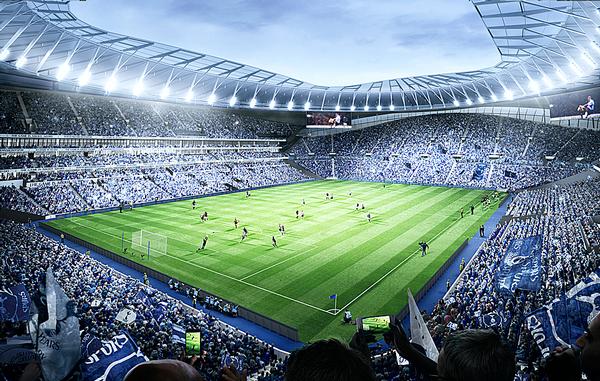
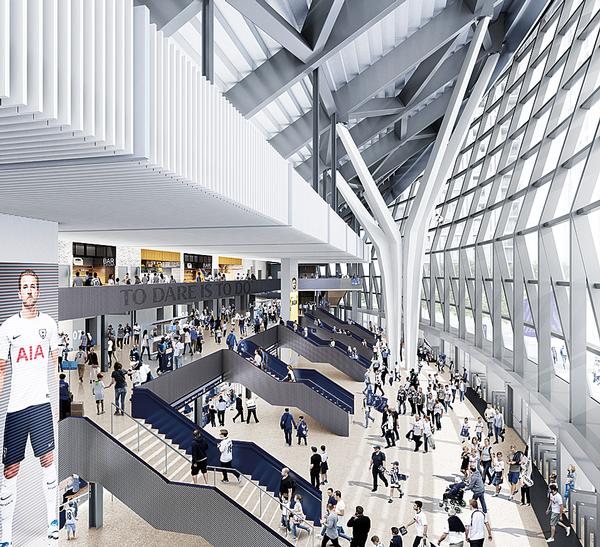
The new Tottenham Hotspur stadium
Christopher Lee:
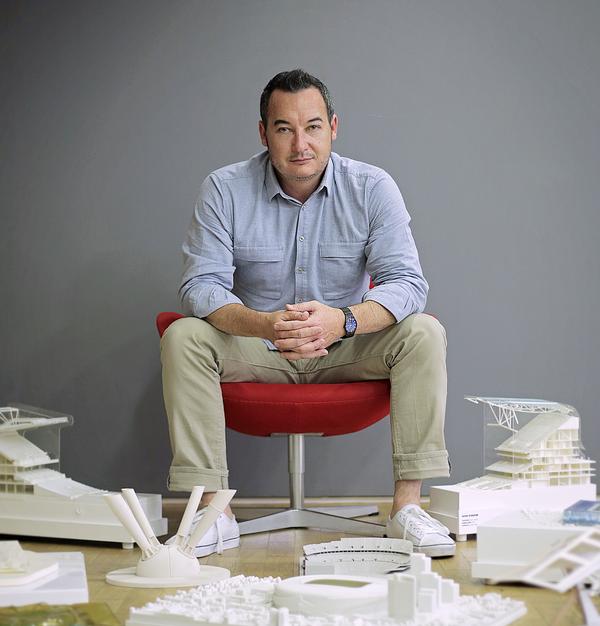
Venue design is now focused on creating plenty of variety in seating products – from family enclosures and club seats to ‘singing areas’ and corporate zones. We’re definitely moving away from what is derisively called ‘the corporate sandwich’, where you have corporate boxes sandwiched between the general admission fans.
Everyone now pays a lot of money for their tickets, so everyone should be considered as a customer – and everyone’s experience should be curated. It’s no longer about the haves and the have-nots. Everyone should have access.
Tottenham’s chair Daniel Levy was adamant about this. He said he wants every ticket, from the least expensive to the most expensive, to offer a series of quality experiences at the new stadium, within an authentic environment.



